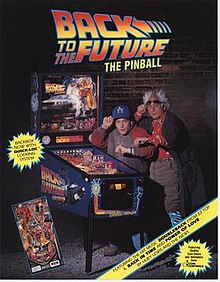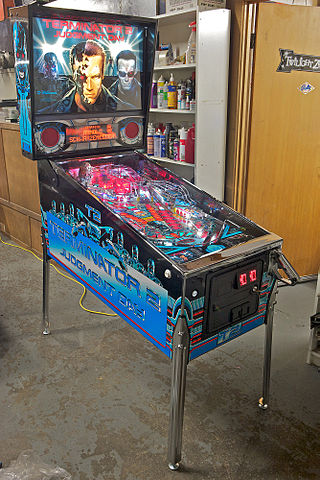
Pinball games are a family of games in which a ball is propelled into a specially designed table where it bounces off various obstacles, scoring points either en route or when it comes to rest. Historically the board was studded with nails called 'pins' and had hollows or pockets which scored points if the ball came to rest in them. Today, pinball is most commonly an arcade game in which the ball is fired into a specially designed cabinet known as a pinball machine, hitting various lights, bumpers, ramps, and other targets depending on its design. The game's object is generally to score as many points as possible by hitting these targets and making various shots with flippers before the ball is lost. Most pinball machines use one ball per turn, and the game ends when the ball(s) from the last turn are lost. The biggest pinball machine manufacturers historically include Bally Manufacturing, Gottlieb, Williams Electronics and Stern Pinball.

Data East Corporation, also abbreviated as DECO, was a Japanese video game, pinball and electronic engineering company. The company was in operation from 1976 to 2003, and released 150 video game titles. At one time, the company had annual sales of 20 billion yen in the United States alone but eventually went bankrupt. The American subsidiary, Data East USA, was headquartered in San Jose, California. Its main headquarters were located in Suginami, Tokyo.
Stern is the name of two different but related arcade gaming companies. Stern Electronics, Inc. manufactured arcade video games and pinball machines from 1977 until 1985, and was best known for Berzerk. Stern Pinball, Inc., founded in 1986 as Data East Pinball, is a manufacturer of pinball machines in North America.

Back to the Future is an American science fiction comedy franchise created by Robert Zemeckis and Bob Gale. The franchise follows the adventures of a high school student, Marty McFly, and an eccentric scientist, Dr. Emmett "Doc" Brown, as they use a DeLorean time machine to time travel to different periods in the history of the fictional town of Hill Valley, California.

Over one hundred video games based on the Star Wars franchise have been released, dating back to some of the earliest home consoles. Some are based directly on films while others rely heavily on the Star Wars Expanded Universe.
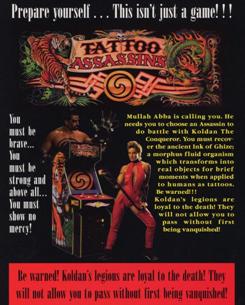
Tattoo Assassins is an unreleased 1994 fighting game developed by the pinball division of Data East for release in arcades. A few prototypes were test-marketed, but the game was never officially released. Spearheaded by Bob Gale and Joe Kaminkow, Tattoo Assassins was designed to be Data East's answer to Mortal Kombat.
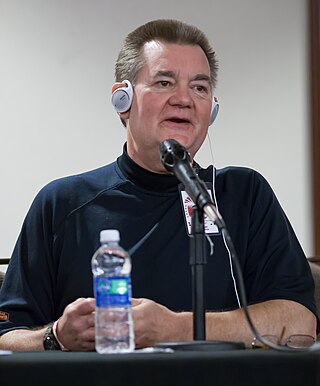
Steven Scott Ritchie is an American pinball and video game designer. His career began in the 1970s, Ritchie holds the record for best-selling pinball designer in history. He has been called "The Master of Flow" due to the emphasis in his designs on ball speed, loops, and long smooth shots. Ritchie was also the original voice of Shao Kahn in the Mortal Kombat fighting game series, serving as the announcer of Mortal Kombat II (1993), Mortal Kombat 3 (1995), and the updates to Mortal Kombat 3. He is the older brother of fellow pinball designer Mark Ritchie.

The Simpsons Pinball Party is a 2003 pinball game released by Stern Pinball.
The Simpsons is a 1990 pinball game released by Data East Pinball. It is based on the animated sitcom The Simpsons and features many elements from the series, such as character voices and music. The game was popular in the United States, becoming a hit for Data East Pinball. It has been cited as helping increase the popularity of pinball machines at the beginning of the 1990s. The Simpsons pinball game was followed by The Simpsons Pinball Party in 2003.

Teenage Mutant Ninja Turtles is a 1991 pinball machine designed by Joe Kaminkow and Ed Cebula. It is based on the comic book characters of the same name, and was preceded by a related TV series and feature film. The game uses the action figures made by Playmates Toys as decoration for the table. A second Teenage Mutant Ninja Turtles pinball machine was released by Stern Pinball in June 2020.

Checkpoint is a 1991 pinball machine released by Data East. It featured the first dot matrix display (DMD) ever incorporated into a pinball game. For Checkpoint, Data East used a "half-height" DMD. By way of comparison, Williams later produced machines with standard DMDs that were twice the height. Checkpoint also features video mode minigames on its display.

Last Action Hero is a pinball machine designed by Joe Kaminkow and produced by Data East Pinball. It is based on the motion picture of the same name.

The Who's Tommy Pinball Wizard is a pinball machine based on the rock musical The Who's Tommy, based upon the band's 1969 rock opera album of the same name, which was also adapted into a 1975 motion picture. The machine features twenty-one songs from the musical sung by original Broadway cast members. The game was designed by Joe Kaminkow, Ed Cebula, Lonnie D. Ropp, and Lyman F. Sheats Jr. The machine was built using Solid-state electronics type components. The backbox of the machine has a dot matrix display with animations by Kurt Andersen and Markus Rothkranz. 4,700 machines were manufactured by Data East in January 1994.
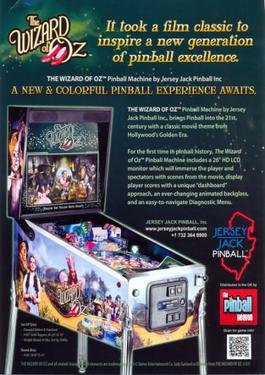
The Wizard of Oz is a Jersey Jack Pinball, Inc. pinball machine designed by Joe Balcer and released in April 2013. It is the first US pinball machine with an LCD in the back box as well as the first one to have color on the monitor produced in the US since the Pinball 2000 games. Although it is not the first pinball machine with a LCD worldwide because MarsaPlay in Spain manufactured a remake of Inder's original Canasta titled New Canasta, with an LCD screen in the backbox in 2010.

Zaccaria, was an Italian company of pinball and arcade machines that existed in Bologna from 1974 until 1990. The factory was sold to tecnoplay.
John A. Popadiuk Jr. is a Canadian pinball machine designer. He started work in the business at 19 for Bally in 1980, and later at WMS Gaming from 1989 to 2000. He now works for deeproot Tech as Exclusive Game Designer.

The Phantom of the Opera is a pinball machine released by Data East in 1990. The game is based on the 1910 French novel The Phantom of the Opera by Gaston Leroux, but not based on the 1986 musical by Andrew Lloyd Webber or movie of the same name, although released around the same time. The game was designed by Joe Kaminkow and Ed Cebula.

Lost World is a pinball machine released by Bally in 1977. The game features a fantasy theme. It should not be confused with the pinball machine Escape from the Lost World from 1987.
Lyman F. Sheats Jr. was an American pinball champion, game designer and coin-operated game operating system software engineer who had worked for Bally, Williams, and Stern Pinball, among other companies.
